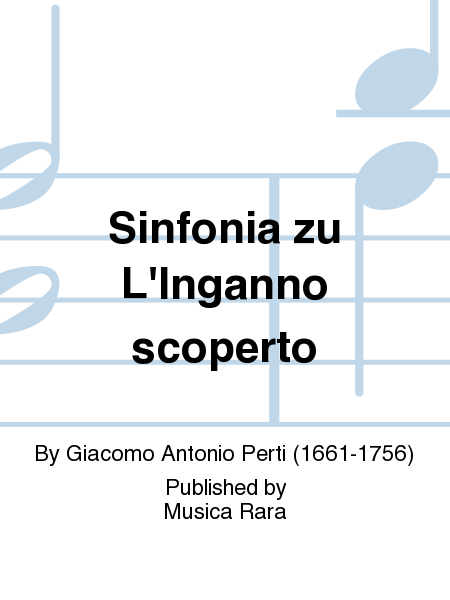Sinfonia zu "L'Inganno Scoperto per Vendetta"
piano reduction
-
Ships in 3 to 4 weeks
Details
Description
SKU: BR.MR-2239A
Piano reduction. Composed by Giacomo Antonio Perti. Edited by Mark Latham. Arranged by Mark Latham. Solo instruments; Softcover. Musica Rara. Symphony; Baroque. Piano reduction. 8 pages. Breitkopf and Haertel #MR 2239A. Published by Breitkopf and Haertel (BR.MR-2239A).ISBN 9790004487877. 9 x 12 inches.
There are two known manuscript sources for the present edition of this sinfonia avanti l'opera. In the Dean and Chapter Library of Durham Cathedral it appears as the twelfth, and last, piece in a collection of late seventeenth-century Italian instrumental music. No composer is given and identification was only possible following the discovery, in 1993, of a concordant source in the Biblioteca Estense, Modena, where the work appears as the sinfonia to Perti's opera L'Inganno scoperto per Vendetta, first performed in Venice as part of the 1690/1 season.It is sometimes hard to ascertain the original functional purpose behind many of the trumpet works written by composers of the Bolognese school as it would appear that some were used as sonate da chiesa, to celebrate mass in the basilica of San Petronio, Bologna, whilst also serving as operatic sinfonie. To confuse the issue further, there are several instances of composers 'borrowing' each other's works: for example, it has recently been discovered that the Torelli trumpet sinfonia a 4 catalogued as G4 in Giegling was used as the overture to Perti's opera Nerone fatto Cesare (1693). So far as the present edition is concerned, however, stylistic considerations would appear to confirm that the work is indeed by Perti and that it was originally conceived as the overture to L'Inganno scoperto per Vendetta. A couple of clues hint at a secular raison d'etre: the Durham source is marked Serenatto (presumably a corruption of serenata, a term often used in lieu of sinfonia) and the last movement of the Modena source is marked Menuet, a term more often associated with sonate da camera than with works of ecclesiastical provenance.Both the Modena and Durham sources for the present edition are virtually note-perfect and occasional inaccuracies were easily corrected by comparing the sources with each other and with the part-books in Durham. Whilst the Modena source lacks the second violin part in the outer movements it contains fuller dynamic markings and tempi indications than the Durham source and these have been followed in the present edition with no editorial additions. Notation has been modernised and, in the piano reduction edition, right-hand arpeggio-figurations rendered more pianistic. Parts are provided for trumpet in D and B flat. I am grateful to the Dean and Chapter of Durham and to the Biblioteca Estense, Modena, for providing microfilm of the manuscripts. I should also record my thanks to Keith Wright for realising the figured-bass which appears in the full-score edition.Mark Latham, Brancepeth Castle, June 1997.

 Share
Share